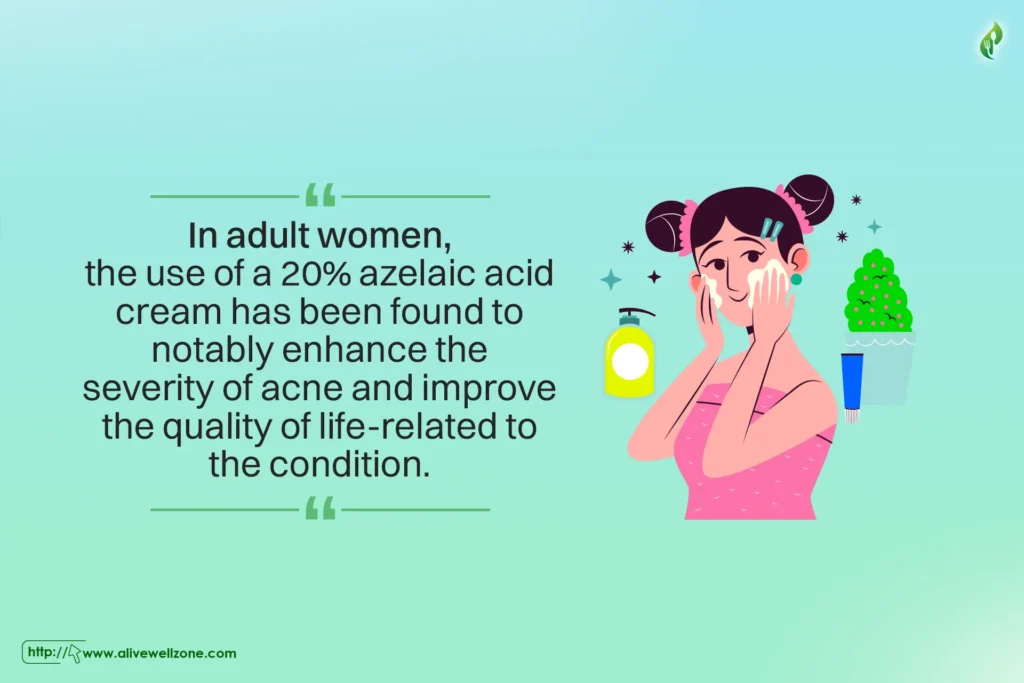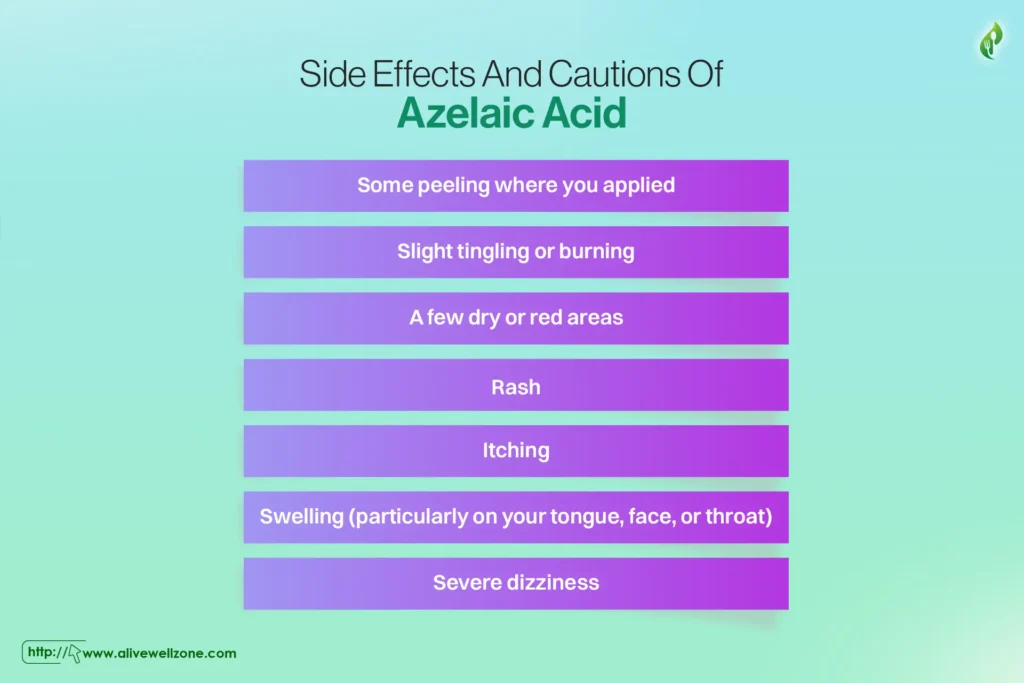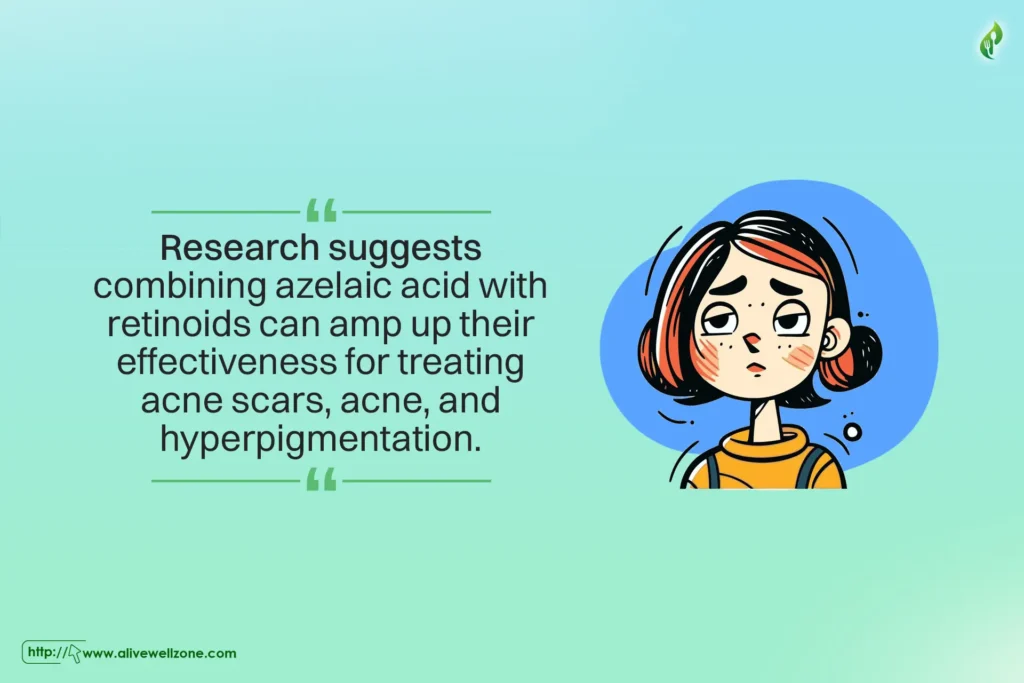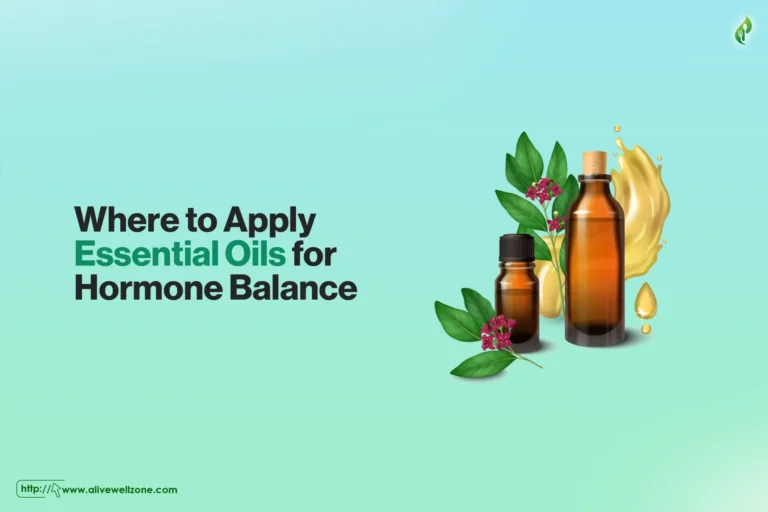
Last Updated on August 30, 2025 by Helena Akter
In a world filled with countless skincare options, there are two names that keep popping up: Azelaic Acid and Retinol. But which one is right for you? Should you use both of them? Or what?
Well, the choices can be overwhelming, leaving you in a state of confusion and uncertainty. No worries, we’ve got you covered!
We’ll guide you through the maze of information, explain their benefits, side effects, and effectiveness, and help you achieve radiant, healthy skin. So, let’s start and discover how they can transform your complexion.
What is Azelaic Acid?
Azelaic acid is produced by Malassezia furfur, a helpful yeast that lives on our skin. It’s a naturally evolving dicarboxylic acid that may be found in some animal products as well as cereal grains including barley, rye, and wheat.
You can find it in various forms like creams, foams, and gels. Want a prescription? Azelex and Finacea got your back with a strength of 15%.
Alternatively, you can grab some nonprescription drugs with 10% to 12% strength.
Benefits of Azelaic Acid

Now, it comes with some remarkable benefits that you should definitely check out.
- Azelaic acid serves to protect the skin from the harmful impacts of free radicals, that cause inflammation.
- It aids in reducing redness, leading to an improvement in the overall appearance of the skin.
- By eliminating acne-causing bacteria on the skin, azelaic acid plays a significant role in combatting acne.
- Azelaic acid is highly beneficial for addressing various skin concerns such as acne breakouts, post-acne scarring, and melasma.
- It also serves as an effective treatment option for managing symptoms associated with rosacea.
Note: Take a look at what to do after steaming your face for extra care with your face.
Different Forms of Azelaic Acid
You can get azelaic acid in various topical products as a component. And they’re —
- Cleansers
- Skin brightening creams
- A spot treatment
- Serums for dark spots
- Treatments for acne
Side Effects And Cautions Of Azelaic Acid

Generally, it’s a safe bet, even for sensitive skin. But there’s still a chance of some irritation. The most common side effects you might encounter include —
- some peeling where you applied
- slight tingling or burning
- a few dry or red areas
Now, here’s the important part; serious allergic reactions are extremely rare, but if you notice any signs like a —
- rash
- itching
- swelling (particularly on your tongue, face, or throat)
- severe dizziness
Then don’t wait—seek medical help ASAP. And remember, if you experience any serious side effects like worsened asthma symptoms, make a beeline to the doctor. Better safe than sorry, right?
What is Retinol?
Retinol is a member of the retinoids family, which is derived from vitamin A. It works its magic by increasing the formation of proteins known as collagen and elastin. Proteins like these aid your skin in remaining firm and smooth.
Believe it or not, according to the American Osteopathic College of Dermatology. retinol has been around since 1971, helping with wrinkles, acne, and even some cancers.

Moreover, the strongest version is called retinoic acid also known as Tretinoin, or Retin-A. But don’t worry, our skin already has some of it naturally. So, it’s like a perfect match that doesn’t need any special conversion. However, if you intensify it you must know what to mix with retinol.

Benefits of Retinol
Now, you can see the amazing benefits of retinol underneath
- Treats acne and helps keep it under control
- It minimizes the appearance of fine lines and wrinkles
- Helps to minimize the appearance of enlarged pores on the skin
- Provides relief from the symptoms of psoriasis
- It reduces pigmentation issues by a significant amount
- Makes your complexion look more radiant, brighter, and more youthful
Different Forms of Retinol
Though retinol is available in many forms, it’s used as a component in cosmetic goods as well. You can find retinol in —
- Lotions
- Serums
- Gels
- Creams
- Ointments
Side Effects And Cautions Of Retinol
If you’re just beginning with retinol, start with lower concentrations and gradually increase if needed. Start with an over-the-counter (OTC) product since they come in different strengths.
Regarding possible side effects, don’t be surprised if you experience some dryness and irritation, especially in the beginning. And here’s an interesting twist, some retinoids might temporarily make your acne slightly worse before improving it.
That being said, serious side effects are rare, like intense redness, flaking, or burning. According to Zenovia Gabriel, a board-certified dermatologist, strong topicals might not be your cup of tea if you have sensitive skin like rosacea.
Additionally, if you’re pregnant, it’s highly recommended to steer clear of retinol. Keep in mind if those side effects don’t quit, time to bid farewell to the product.
Differences Between Azelaic Acid and Retinol
Some of the differences between each ingredient are shown in the table below.
| Azelaic Acid | Retinol |
| Takes time to work | Works pretty fast |
| Doesn’t irritate the skin that much | A greater chance of irritating your skin |
| Suitable for ages 12 and up | For those over the age of 30 |
| Costs a good amount of money | It’s more affordable |
Do You Need Both of Them?
Research suggests combining azelaic acid with retinoids can amp up their effectiveness for treating acne scars, acne, and hyperpigmentation. While azelaic acid and retinol make a dream team, you don’t necessarily have to use both.

If you’ve got rosacea or super sensitive skin, azelaic acid alone can be your go-to hero. It’s been proven to tackle acne and rosacea without needing retinol on the side. Plus, many people use niacinamide [niacinamide and azelaic acid], vitamin C with azelaic acid [can you use azelaic acid with vitamin c],
Now, if you’re over 35 and worried about dark spots, wrinkles, aging skin, and acne, say hello to Retinol! Just remember, it’s not an overnight miracle worker. While prescription-strength retinoids may show results in weeks, for over-the-counter retinol, give it around 6 months.
Finally, can you use azelaic acid with retinol? the choice is yours.
Azelaic Acid and Retinol FAQs
Can azelaic acid get rid of dark spots?
Definitely! Azelaic acid is a total tyrosinase inhibitor. That means it puts a stop to those pigment-producing cells. With regular use, it can gradually lighten those pesky discolourations.
Can I use Azelaic Acid in the morning and at night?
Yes, you can. Azelaic acid is a versatile player that can be used both in the AM and PM. You should use it once a day in the morning, especially when paired with a retinoid that’s best used at night.
Is it safe to use retinol and retinoids while pregnant?
No, it’s not the best idea. There’s a chance they could up the risk of birth defects. Doctors usually suggest skipping these ingredients during pregnancy, just to be safe for those precious nine months.
When will retinol start working its magic?
Well, it gets to work right away in your skin cells. It takes a few weeks before you’ll notice that awesome improvement in your skin’s appearance and texture. You can’t expect instant results. Actually, brace yourself because things might look a bit worse initially as your skin adjusts to the new routine.
Wrapping Up
From understanding Azelaic Acid and Retinol to knowing their unique perks, you’re now armed with the know-how to make your skin sing. It’s totally normal to feel a little anxious and confused about which route to take.
You can’t risk your skin, right? That’s why we suggest you try it out to see which one suits you the best. If you notice an adverse reaction, stop using. In contrast, if you see noticeable improvement by combining them you’re totally good to go.







